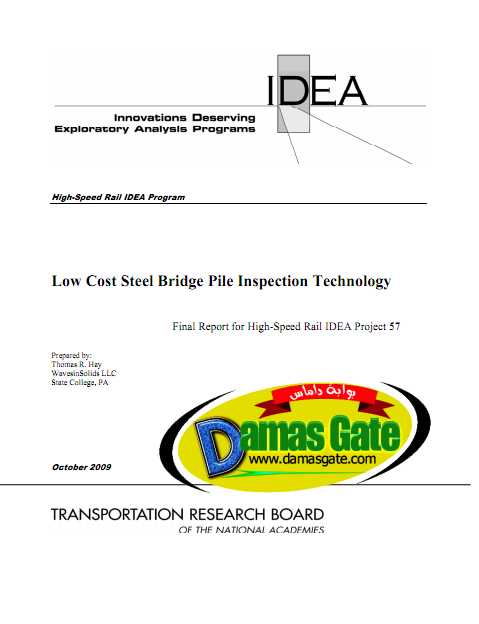Low Cost Steel Bridge Pile Inspection Technology
EXECUTIVE SUMMARY
The goal of this project was to develop long range ultrasonic technology (LRUT) for submerged bridge pile wall loss detection and characterization. During this project, electromagnetic acoustic transducers (EMATs) were used to generate shear-horizontal waves (SH-waves) that have the unique capability to inspect submerged H-pile. Compared to other types of ultrasonic guided waves, these waves are not attenuated significantly by water. A prototype hand-held EMAT scanner for H-pile inspection was developed during this project and a simple interpretation procedure to quantify the observed wall losses was also developed.

Bridge piles are currently visually inspected annually. Pile inspections as carried out currently, are highly subjective and will vary depending on the inspector’s training, skill and experience. Submerged piles are typically inspected using divers.
In many cases, significant sections of pile cannot be visually inspected since they are submerged in environments, such as swamp water and river beds, that prevent visual inspection. The condition of underwater bridge substructures was determined to be the cause for several bridge collapses over the last few decades. Therefore, there is a requirement for affordable pile inspection technology capable of providing feedback on the condition of bridge piles. The ideal technology would be able to inspect submerged pile remotely at easy-to-access pile locations above water.
Quantitative readings on remaining wall could then be used to estimate pile remaining life and load rating for the bridge. Submerged H-piles are difficult to inspect visually since access to the structure is limited. Long range ultrasound (sometimes referred to as guided waves) is currently being used to inspect underground pipelines and the inspection of long sections of rail lends itself naturally to this technology. Longrange ultrasound can penetrate underneath coatings, water, soil, and mud to provide quantitative feedback on the Hpile remaining wall thicknesses.
Download
http://s18.alxa.net/s18/srvs2/02/002...Technology.rar